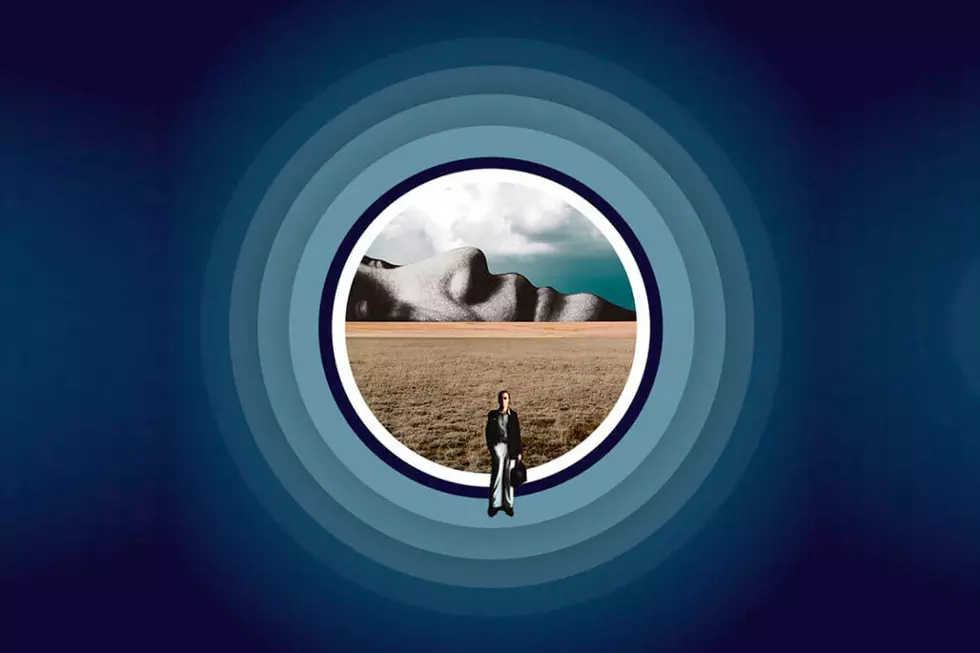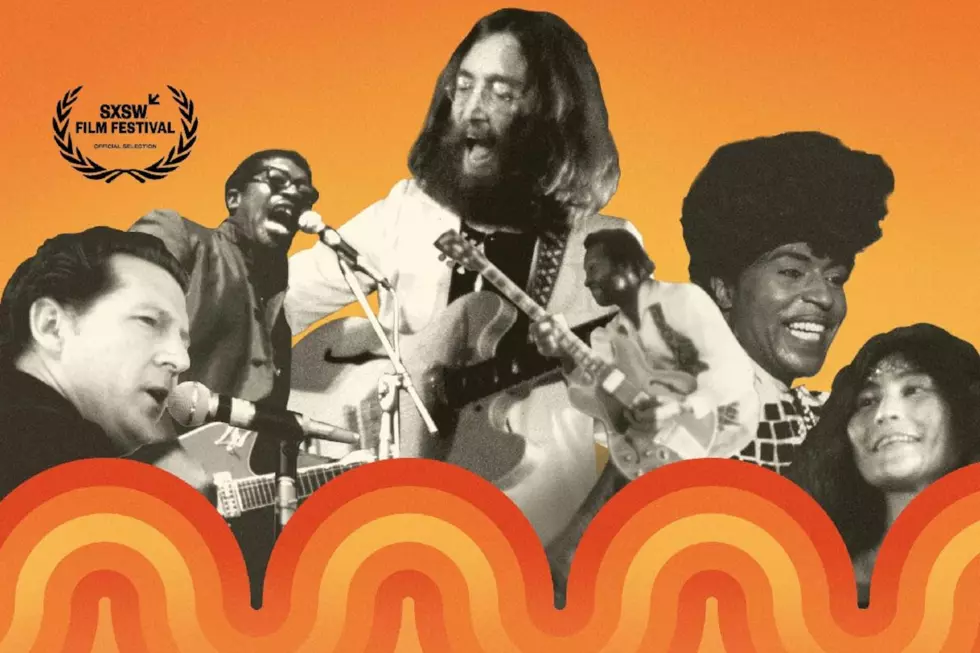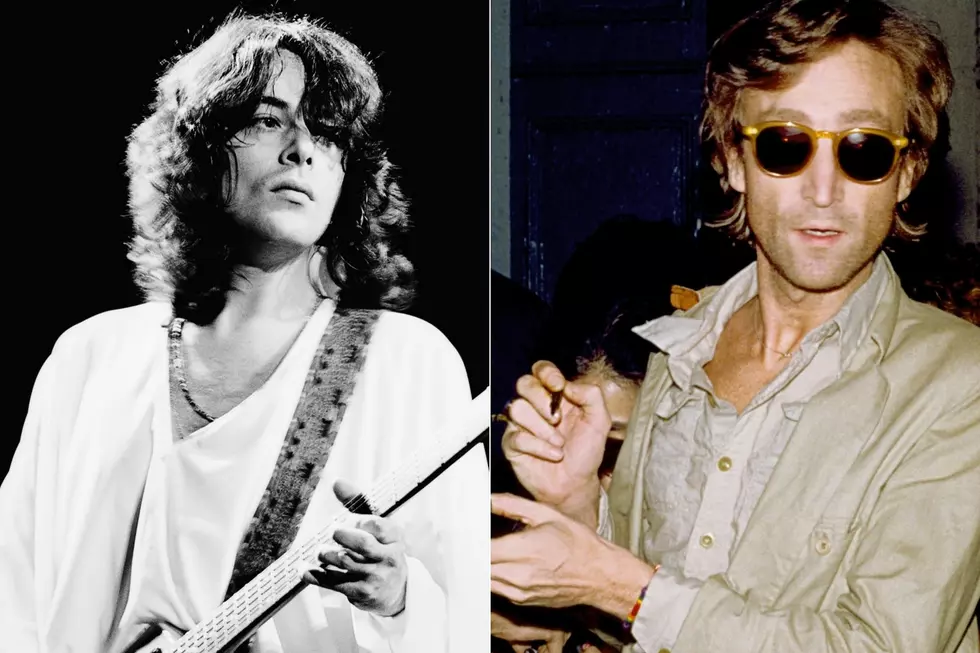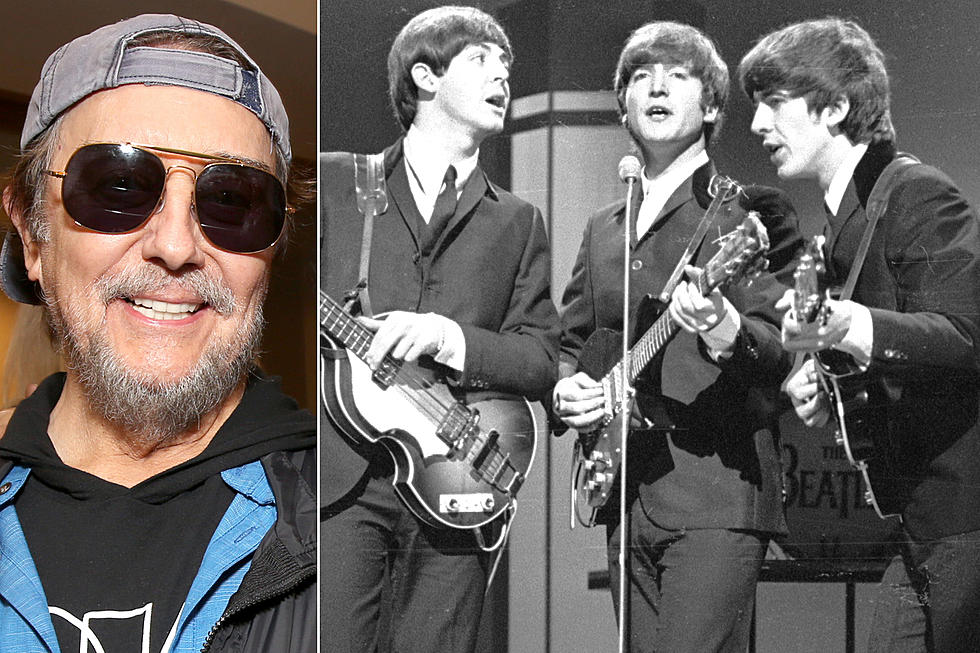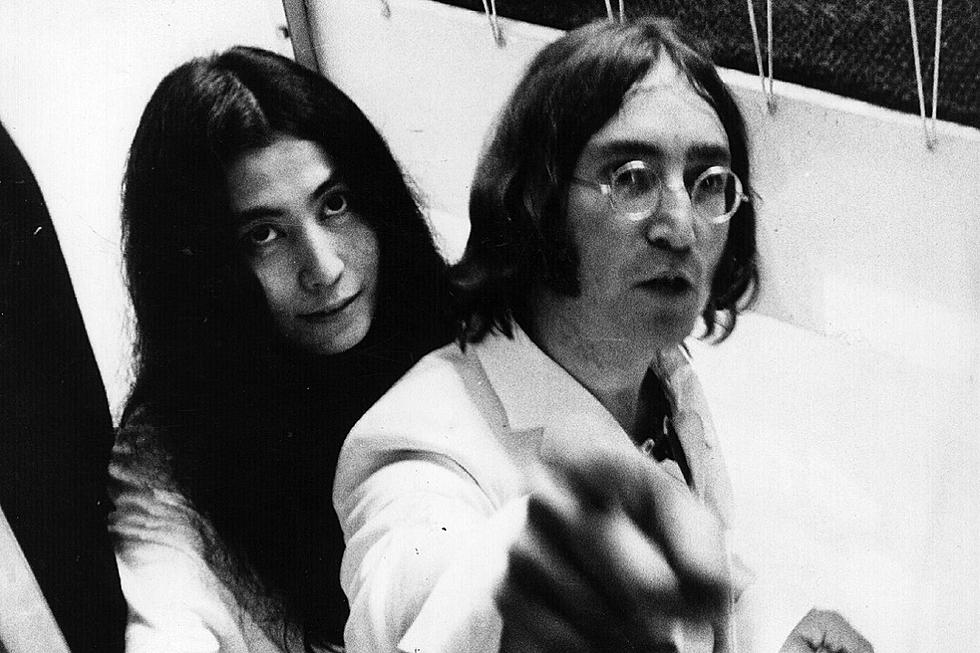
The Day John Lennon Met Yoko Ono
There are few figures more controversial in rock history than Yoko Ono. For decades, fans and critics have theorized about the extent of her influence on John Lennon and debated her role in the Beatles’ breakup. It should come as no surprise, then, that even Lennon and Ono’s first meeting is mired in uncertainty.
Born in Japan, Ono became interested in experimental art when she attended college in New York in the ’50s. By the time she met Lennon in the ’60s, she was on her second marriage, to American jazz musician Anthony Cox, which had produced a daughter, Kyoko Chan Cox, in 1963. According to Ono, the relationship between Cox and her had soured, although they remained married. She left the raising of little Kyoko to her husband so that she could focus on her avant-garde artwork. Ono’s involvement in the art community brought her to London in the mid-’60s
Lennon, meanwhile, was part of the most famous rock band on the planet. He was married to Cynthia Lennon, who had delivered a son, Julian (also born in 1963). The Beatles were in the middle of their most creative era, phasing out their live performance commitments in favor of experimenting further on studio recordings. At the time of Lennon and Ono’s first meeting, Ono was either completely unaware of Lennon (being focused on the art world and not pop stars) or she knew exactly who he was (and maybe even pursued the rock singer).
Was Ono an oblivious artist who made an instant connection with rock royalty over art? Or was she a calculating figure who worked to forge a relationship for the sake of love, fame or money? It all depends on whom you believe.
Let’s start with the “official” version, or at least the story that Lennon and Ono told interviewers about the day the two met for the first time. In the fall of 1966, Ono was in London for an art exhibition, Unfinished Paintings and Objects, hosted by the Indica gallery and bookshop in Mayfair.
The gallery was co-owned by art dealer John Dunbar (then-husband of Marianne Faithfull), musician Peter Asher (of Beatles pals Peter and Gordon) and bookseller and writer Barry Miles (who would author books on the Beatles and other famous rockers). Paul McCartney was a major supporter of the Indica, which had only begun the year before.
Dunbar invited his friend, Lennon, to the gallery to see Ono’s works the day before the show opened. Although some report the date as Nov. 9 (due to a mistake by Lennon), the day was actually Nov. 7, because Ono’s show began on the 8th and continued for the next 10 days. The Beatle had the mistaken impression that the exhibition would be of a sexual nature, involving a woman artist in a bag. When he showed up, he was greeted instead by a variety of conceptual pieces, including an apple and a bag of nails with ludicrous price tags.
“I thought this is a con. What the hell is this?” he later told the BBC. “Nothing’s happening in the bags. I’m expecting an orgy, you know ... and it’s all quiet.”
Disappointed, Lennon was skeptical about the displays, and the artist herself, who greeted him with a card that read “breathe.” The singer complied with a pant. Lennon was suspicious that he might have been invited as a “rube” who would spend some of his recently acquired fortune on these avant-garde pieces. Both at the time and in later years, he maintained that Ono didn’t have any familiarity with him or the Beatles, and only had heard the name "Ringo" via the media.
Lennon’s mood turned, however, when he checked out a piece that caught his eye. Ono had placed a ladder that led up to a canvas on the ceiling with some tiny type that required the use of a magnifying glass.
“And in tiny little letters it says ‘yes.’ So it was positive,” Lennon told Rolling Stone in 1971. “I felt relieved. It’s a great relief when you get up the ladder and you look through the spyglass and it doesn't say ‘no’ or ‘fuck you’ or something, it said ‘yes.'”
Listen to Side 1 of 'Two Virgins'
His curiosity increasing, Lennon engaged Ono in regards to her piece “Painting to Hammer a Nail In.” The pop star was eager to try his hand, but the artist was reluctant for him to “ruin” the work before the exhibition’s opening the next day. She asked him to pay five shillings per nail, but instead the two agreed that Lennon would pay imaginary money to hammer an imaginary nail.
“And that’s when we really met,” Lennon told Playboy not long before his 1980 murder. “That’s when we locked eyes and she got it and I got it.”
But some of those who were around Lennon and Ono in those days have told a slightly different story about how the two met. Lennon’s trip to the Indica Gallery has never been disputed, yet there are rumors that the pair already had become acquainted before that November day.
Lennon’s Beatles bandmate McCartney has said that he remembers being approached by Ono a year earlier, in 1965. She was seeking song manuscripts for a book project she was working on with her friend, experimental composer John Cage. Miles, co-owner of the Indica, backed up McCartney’s version.
“She knew exactly who [the Beatles] were,” Miles told the Daily Telegraph in 2002. “She’d already approached Paul for some John Cage manuscripts she wanted. He wouldn’t give her anything, but suggested she go to John. But she told John she’d never heard of the Beatles and he believed her.”
Miles and McCartney claim that Lennon had given Ono the lyrics to the Beatles song “The Word” for the Cage book months before her 1966 London show. But perhaps they hadn’t met in person.
Then there’s still another version of Ono’s first interaction with Lennon, as recalled by Reg King, singer of the London band the Action (like the Beatles, a group produced by George Martin). King, who had a reputation for looking somewhat like Lennon, remembered being approached by Ono at a club.
“She said, ‘Reggie, you look very much like John Lennon’,” King said. “It wasn’t me she wanted, it was John. So I said, ‘Look, if it helps, John does occasionally go to the Speakeasy. I see him there sometimes on a Tuesday night.’ The very next Tuesday she was there. … That night Paul and John came in. … Yoko stood there dumbfounded, ‘Wow, you really do know the Beatles.’ Within 15 minutes she was in there and the rest is history.”
Regardless of the true story of Lennon and Ono's first meeting, their relationship didn’t begin immediately. After the Indica show, the two – each of whom was still married – continued to correspond over the ensuing months about Ono’s art. (Miles says she barraged Lennon with postcards.) Ono later admitted to being extremely attracted to Lennon, who agreed to sponsor another Ono show in London in 1967. Months later, when Cynthia went on vacation, John and Ono collaborated on the Two Virgins sound collage and became lovers.
“That old gang of mine. That's all over. When I met Yoko is when you meet your first woman and you leave the guys at the bar and you don’t go play football anymore and you don't go play snooker and billiards,” Lennon recalled more than a decade after that. “You know the song: ‘Those wedding bells are breaking up that old gang of mine.’ … The old gang of mine was over the moment I met her. I didn't consciously know it at the time, but that’s what was going on. As soon as I met her, that was the end of the boys, but it so happened that the boys were well known and weren’t just the local guys at the bar.”
Lennon and Ono became famously inseparable in the later days of the Beatles, and beyond. They got married in 1969, but that’s a whole other ballad.
Beatles Solo Albums Ranked
See John Lennon in Rock’s Craziest Conspiracy Theories
More From Ultimate Classic Rock





